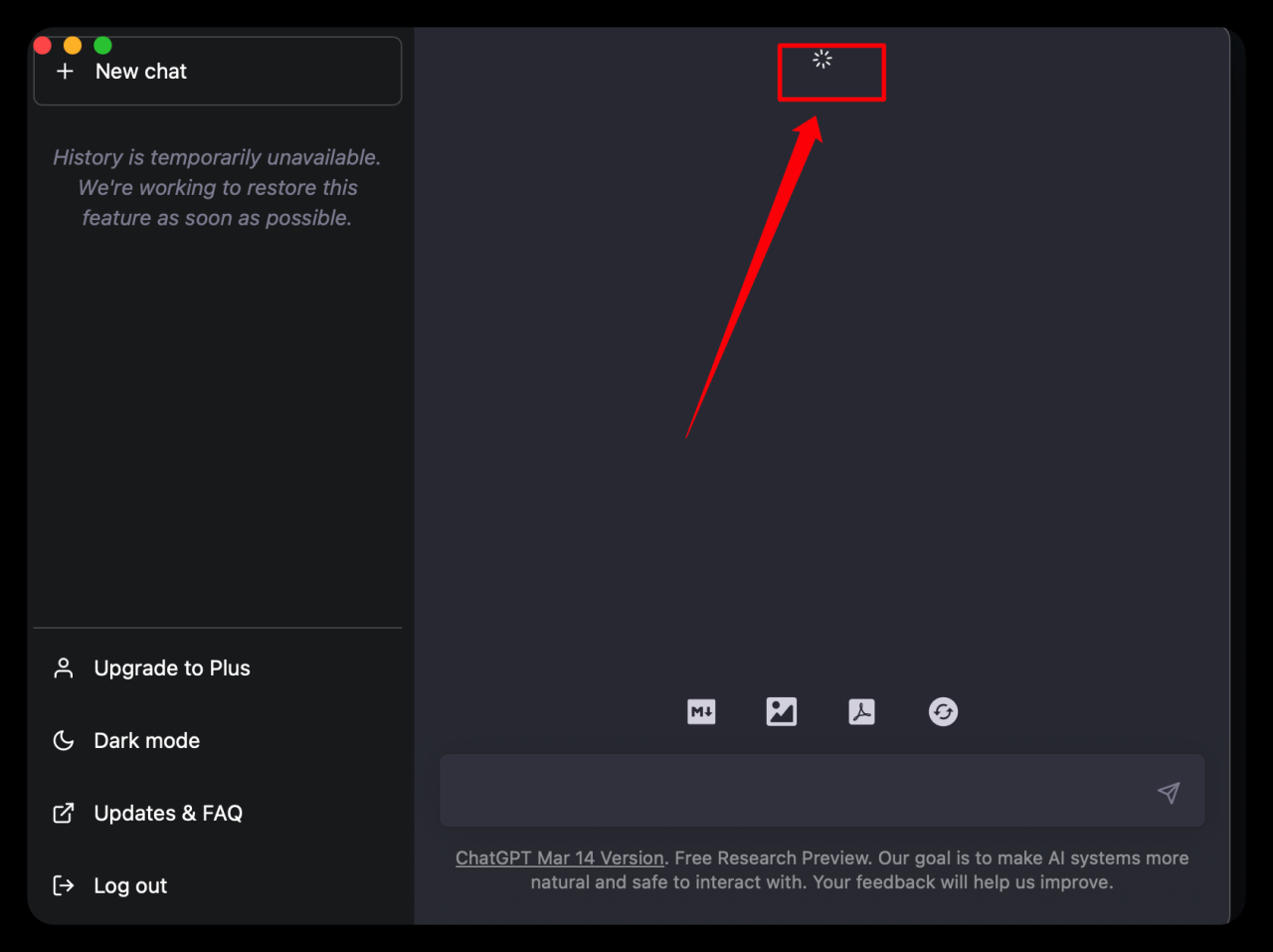Chatgpt down? – Kami Down? It happens. These service interruptions can be frustrating, leaving users unable to access the platform’s features. This guide explores common causes of downtime, user experiences, troubleshooting steps, and alternative solutions to help you navigate these situations effectively. We’ll cover everything from identifying the problem to finding workarounds and understanding how the service provider communicates outages.
ChatGPT down? Bummer! If you’re stuck without it, maybe try catching up on emails using the surprisingly decent wifi on the ferry – check out the details on BC Ferries’ wifi here: bc ferries wifi. Hopefully, ChatGPT will be back online by the time you dock; otherwise, enjoy the scenery!
Understanding the reasons behind downtime—from technical glitches to planned maintenance—is key to managing expectations and finding quick solutions. We’ll also look at how users report issues and how the service provider responds, offering insights into effective communication strategies during outages.
Service Interruptions

Service interruptions, unfortunately, are a reality in the digital world. Understanding their causes, impact, and mitigation strategies is crucial for both service providers and users. This section will explore common causes of temporary outages, their effects on user experience, and effective strategies to minimize disruption.
Common Causes of Temporary Outages
Several factors can contribute to temporary service outages. These range from planned maintenance to unforeseen technical glitches. Understanding these causes allows for better preparation and mitigation.
- Planned maintenance: Scheduled downtime for upgrades or repairs.
- Hardware failures: Server crashes, network equipment malfunctions.
- Software bugs: Errors in code leading to service instability.
- Cyberattacks: DDoS attacks, data breaches.
- Natural disasters: Power outages, extreme weather conditions.
- High traffic volume: Unexpected surges in user activity exceeding capacity.
Impact on User Experience During Downtime
Service disruptions significantly impact user experience, leading to frustration and potentially lost productivity or revenue. The severity of the impact depends on the duration and nature of the outage.
- Inability to access services: Users cannot perform tasks relying on the affected service.
- Loss of productivity: Workflows are interrupted, leading to delays and missed deadlines.
- Frustration and dissatisfaction: Users experience inconvenience and may lose trust in the service.
- Financial losses: Businesses may experience revenue loss due to service unavailability.
- Reputational damage: Negative reviews and social media posts can damage the service’s reputation.
Strategies for Mitigating the Effects of Service Disruptions
Proactive planning and robust mitigation strategies are key to minimizing the impact of service disruptions. This includes redundancy, monitoring, and effective communication.
- Redundancy: Having backup systems and infrastructure to ensure continued operation during failures.
- Regular maintenance: Preventative measures to reduce the likelihood of hardware or software failures.
- Monitoring and alerting: Real-time monitoring of system performance to detect and address issues promptly.
- Disaster recovery plan: A comprehensive plan outlining procedures to restore service in case of major incidents.
- Communication plan: A strategy for informing users about outages and providing updates.
Potential Causes, Impact, and Mitigation Strategies, Chatgpt down?
| Cause | Impact | Mitigation | Recovery Time |
|---|---|---|---|
| Hardware Failure | Complete service outage | Redundant hardware, automated failover | 30 minutes – 2 hours |
| Software Bug | Partial or complete outage, errors | Thorough testing, rollback to previous version | 1-4 hours |
| DDoS Attack | Service unavailability, slow performance | DDoS mitigation solutions, improved network security | Variable, depends on attack intensity |
| Planned Maintenance | Temporary service interruption | Communicate downtime schedule in advance | Pre-defined duration |
User Reports and Feedback
Analyzing user-generated content regarding service disruptions provides valuable insights into the impact of outages and areas for improvement. Social media, support tickets, and surveys offer rich data for understanding user experiences.
Analyzing User-Generated Content
Social media platforms, customer support tickets, and online forums provide a wealth of information about user experiences during outages. Analyzing this data reveals recurring issues and user sentiment.
- Social media monitoring: Track mentions of the service and identify common complaints.
- Support ticket analysis: Categorize support tickets based on issue type and severity.
- User surveys: Gather feedback directly from users about their experience during outages.
Recurring Themes and Patterns in User Complaints
By analyzing user feedback, patterns emerge, highlighting common problems and areas needing attention. This could include specific features failing frequently or consistent complaints about slow loading times.
- Example: Frequent complaints about login issues could indicate a vulnerability in the authentication system.
- Example: Widespread reports of slow loading times may suggest a bottleneck in the network infrastructure.
Examples of User Experiences During an Outage
User experiences during downtime vary depending on the severity and duration of the outage. Understanding these experiences allows for better empathy and improved service recovery strategies.
- Example: A user might experience frustration from being unable to complete an important task.
- Example: A business might suffer financial losses due to interrupted operations.
Categorizing User Feedback
Organizing user feedback based on severity and issue type helps prioritize improvements and allocate resources effectively.
- Severity: Critical, Major, Minor
- Issue Type: Login issues, performance problems, feature failures
Technical Troubleshooting
Providing users with clear and concise troubleshooting steps is crucial for resolving connection problems quickly. This section Artikels a step-by-step guide and a flowchart to illustrate the process.
ChatGPT down? Bummer! Maybe you need to check on a package; if so, you’ll want the ups canada phone number handy. Hopefully, ChatGPT will be back online soon, but in the meantime, getting that package tracking info sorted is key.
Step-by-Step Guide for Resolving Connection Problems
- Check your internet connection: Ensure your device is connected to the internet and the connection is stable.
- Check your browser settings: Verify that your browser is configured correctly and that any extensions are not interfering.
- Clear your browser cache and cookies: Removing temporary files can resolve some issues.
- Restart your device: A simple restart can often resolve temporary glitches.
- Check the service status: Verify if the service is experiencing a known outage.
- Contact support: If the problem persists, contact customer support for assistance.
Possible Technical Solutions for Resolving Connection Problems
Several technical solutions can address connection problems. These solutions may involve server-side fixes, network configuration adjustments, or client-side troubleshooting steps.
- DNS resolution issues: Checking DNS settings and using alternative DNS servers.
- Firewall or proxy settings: Ensuring that firewall or proxy settings are not blocking access.
- Network connectivity problems: Troubleshooting network cables, routers, and modems.
Troubleshooting Flowchart
A flowchart visually represents the troubleshooting process, guiding users through a logical sequence of steps to identify and resolve the issue. The flowchart would start with checking internet connectivity, then proceed to browser settings, cache clearing, and finally, contacting support if the problem persists.
Alternative Solutions and Workarounds
During downtime, alternative methods can help users access similar functionalities. This section explores various approaches and their advantages and disadvantages.
Alternative Methods for Accessing Similar Functionalities
Several alternative methods can provide similar functionality during service interruptions. These alternatives might involve using different platforms or tools.
- Using a competitor’s service: If the service is for a specific task, a competitor’s service may offer similar functionality.
- Using offline tools: If the service involves tasks that can be done offline, offline tools can be used.
- Using a cached version: If a cached version of the service is available, this can be used.
Comparison of Different Approaches

Each alternative approach has its advantages and disadvantages. Users should consider their specific needs and context when selecting an alternative.
- Competitor’s service: Advantages include similar functionality; disadvantages include potential cost and learning curve.
- Offline tools: Advantages include independence from the main service; disadvantages include limited functionality.
- Cached version: Advantages include immediate access to some data; disadvantages include outdated information.
Alternative Tools or Platforms
A list of alternative tools or platforms, along with their pros and cons, provides users with options to maintain productivity during downtime.
ChatGPT down? Bummer! Maybe you need to ship your backup hard drive, in which case you’ll want the UPS Canada phone number handy. Hopefully, they can help get your data moving faster than ChatGPT’s servers are currently responding. ChatGPT down situations really highlight the importance of reliable offline backups!
- Example: If the service is for email, alternative email clients like Thunderbird or Outlook can be used.
- Example: If the service is for document editing, offline word processors like LibreOffice Writer or Microsoft Word can be used.
Visual Representation of Downtime
A visual representation, such as a graph, effectively illustrates the frequency and duration of past outages. This helps identify trends and patterns in service interruptions.
Graph Showing Frequency and Duration of Past Outages
A bar graph could be used to display the frequency and duration of past outages. The x-axis would represent the time period (e.g., months), and the y-axis would represent the number of outages and their duration. Each bar would represent an outage, with its height indicating the duration.
Impact of Downtime on User Engagement
A line graph could show the correlation between downtime and user engagement metrics like daily active users or session duration. A drop in user engagement during outages would be clearly visible.
Graph Depicting the Number of Reported Issues Over Time
A line graph would effectively show the number of reported issues over time. The x-axis would represent time (e.g., days, weeks), and the y-axis would represent the number of reported issues. Key data points would include peak periods of reported issues, corresponding to specific outages.
Communication Strategies: Chatgpt Down?

Effective communication is crucial during service disruptions. A well-defined communication plan ensures users are informed and their concerns are addressed.
Effective Communication Strategies
A multi-channel approach is recommended, using various platforms to reach the widest audience. Transparency and timely updates are essential to maintain user trust.
- Website updates: Post status updates on the service’s website.
- Social media updates: Provide regular updates on social media platforms.
- Email notifications: Send email notifications to subscribed users.
- In-app notifications: Display notifications within the application itself.
Sample Messages for Different Communication Channels
Tailor messages to the specific platform and audience. Keep messages concise and informative.
- Website update: “We are currently experiencing a service disruption. We are working to resolve the issue as quickly as possible and will provide updates here.”
- Social media update: “Experiencing issues with [service name]? We’re aware and working on it! #servicestatus #outage”
Communication Plan to Address User Concerns
A detailed communication plan Artikels procedures for handling user inquiries and providing timely updates. This plan should include designated communication channels and response times.
Key Elements of a Successful Communication Strategy
A successful communication strategy includes proactive communication, transparency, empathy, and a clear plan for addressing user concerns.
Summary
Experiencing downtime with any online service can be disruptive, but understanding the potential causes, troubleshooting steps, and available alternatives can significantly reduce frustration. By proactively preparing for outages and knowing how to access information about service disruptions, you can maintain productivity and minimize the impact of downtime. Remember, proactive communication and a well-defined troubleshooting plan are your best allies during these interruptions.
FAQ Overview
What should I do if I suspect a service outage?
First, check the service provider’s website or social media for announcements. Then, try basic troubleshooting like checking your internet connection and restarting your browser or device.
How long do outages typically last?
The duration varies greatly, from a few minutes to several hours, depending on the cause and complexity of the issue.
Are there any alternative tools I can use during downtime?
Yes, depending on the service, there might be similar platforms or tools that offer comparable functionality. Check online for alternatives.
How can I provide feedback about an outage?
Most services have feedback mechanisms, often through their website or app. Look for a contact form, support email, or social media channels.
